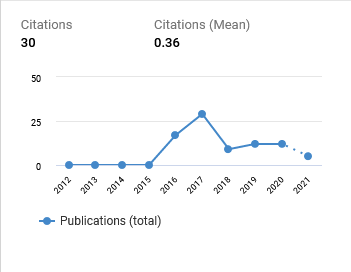Pembangunan Rumah Tinggal dengan Sistim Arisan di Desa Pangan Jaya
DOI:
https://doi.org/10.29080/emara.v3i1.96Keywords:
Sistem Arisan, Bahan bangunanAbstract
The effort to find national identity based on local wisdom became important. One of the local wisdom that can be found in Pangan Jaya villages is Arisan system in building the villager houses. The village of Pangan Jaya were inhabited by former transmigration communities from Lamongan and Bojonegoro districts in East Java Province. Soon as their arrival at transmigration area called Pamandati, those peoples experienced difficulties in daily life. The condition creates a sense of togetherness spontaneously, because their mutual sense in cultivated the farmland. They embody solidarity and mutual assistance (gotong royong) in the form of Arisan that represents their homelands culture. They felt the mutual cooperation habit that they have done in their homeland need to be applied in their new village even though they did not know each other before. The houses built by Pangan Jaya peoples were the result of mutual cooperation in the form of Arisan. The research aimed to study the form of Arisan system among the people of Pangan Jaya village in building their houses. This was a qualitative study with case study approach and data were collected through observation as well as in-depth interviews. The result of the research indicated that the Arisan system on houses construction came in the form of building materials and cash money. This Arisan system can run well because of the similarity of background, life principle and Javanese culture among Pangan Jaya villagers and supported by their healthy economy condition.
Downloads
References
Juariah. (2008). Tinjauan Hukum Islam Terhadap Praktek Arisan Bal-Balan Di Desa Bayem Wetan Kecamatan Kartiharjo Kabupaten Magetan. Perpustakaan Digital UIN Sunan Kalijaga Yogyakarta.
Melati, D., M. (2012). Preferensi Masyarakat Mengikuti Arisan Sepeda Motor Di BMT Amal Mulia Suruh.Tugas Akhir. Jurusan Syariah. Program Studi DIII Perbankan Syariah. Sekolah Tinggi Agama Islam Negeri (STAIN) Salatiga.
Mutiara, F. (2013). Tinjauan Hukum Terhadap Pelaksanaan Arisan Haji. Skripsi. Fakultas Hukum Universitas Hasanuddin.
Pambudi, G., Asriningpurin, H., Kurniawati, F. (2015). Teknologi Hijau Warisan Nenek Moyang di Tanah Parahyangan. Jurnal Sains dan Teknologi Lingkungan. Institut Teknologi Indonesia. Vol. 7, No. 1, Januari, Hal.51-65.
Permatasari, A. (2015). Tinjauan hukum Islam Terhadap Pelaksanaan Arisan Qurban Idul Adha Di Blok 3 Desa Jungjang Kecamatan Arjawinangun Cirebon Jawa Barat Tahun 2008-2012. Naskah Publikasi.
Putra, I., Dewa., G., A., D., dan Yana, A., A., G. (2007). Pemenuhan Atas Perumahan Salah satu Upaya Penanggulangan Kemiskinan. Jurnal Permukiman Natah Vol. 5, No. 2, Agustus : 62 – 108.
Sayuti, S, A. (2005). Menuju Situasi Sadar Budaya: Antara “Yang Lain” dan Kearifan Lokal.
Sueca, N., P. (2005). Faktor-faktor Determinan Transformasi Rumah di Bali. Jurnal Permukiman Natah, Vol. 3, No. 3 Agustus: 62 – 101.
Wastika, D., N. (2005). Penerapan Konsep Tri Hita Karana Dalam Perencanaan Perumahan di Bali. Jurnal Permukiman Natah, Vol. 3, No. 2, Agustus: 62 – 105.

Downloads
Published
How to Cite
Issue
Section
Categories
License
- Authors retain copyright and grant the journal right of first publication with the work simultaneously licensed under a Creative Commons Attribution ShareAlike License that allows others to share the work with an acknowledgment of the work's authorship and initial publication in this journal.
- Authors are able to enter into separate, additional contractual arrangements for the non-exclusive distribution of the journal's published version of the work (e.g., post it to an institutional repository or publish it in a book), with an acknowledgment of its initial publication in this journal.
- Authors are permitted and encouraged to post their work online (e.g., in institutional repositories, pre-print sites, or on their website) prior to and during the submission process, as it can lead to productive exchanges, as well as earlier and greater dissemination of published work.
































